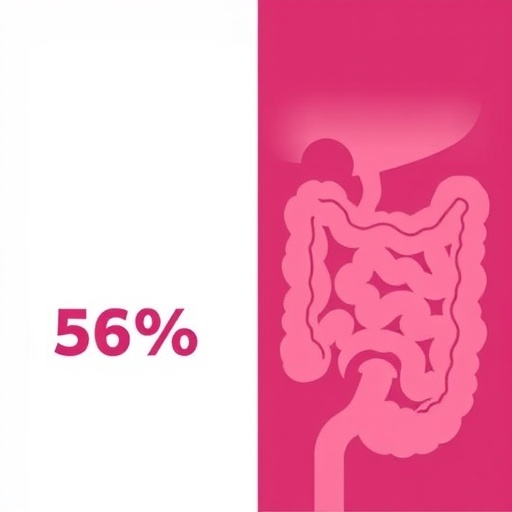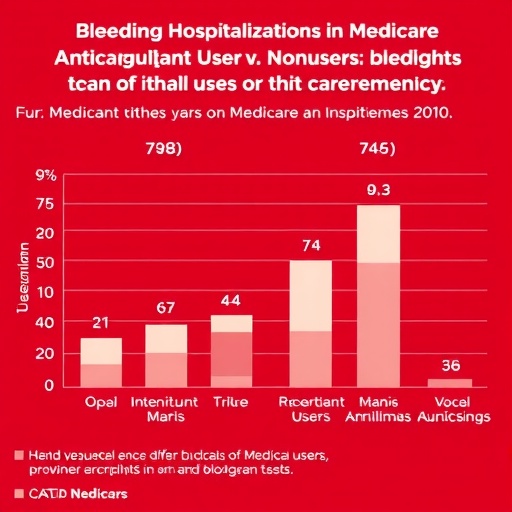PROTECT YOUR DNA WITH QUANTUM TECHNOLOGY
Orgo-Life the new way to the future Advertising by Adpathway
Recent advances in machine learning have ushered in new approaches to predicting medical conditions, prompting researchers to focus on developing systems that can assess risks and improve outcomes for patients. A groundbreaking study led by Li and colleagues, published in Reproductive Sciences, delves into a critical health concern: postpartum hemorrhage, particularly in women with placenta previa following cesarean sections. This condition, which can lead to severe complications, remains a challenge in obstetrics, and the need for effective predictive models has never been greater.
The research stands out due to its application of interpretable machine learning techniques, which allow for transparency in predictions. As the medical community increasingly embraces artificial intelligence, the importance of understanding how models derive their conclusions cannot be overstated. This study aims to address that need, providing clinicians with a tool that not only identifies high-risk patients but also elucidates the reasoning behind its predictions.
In their analysis, the researchers utilized a multicenter approach, pooling data from various hospitals to enhance the robustness of their findings. By employing diverse datasets, they aimed to ensure that their model would be generalizable and applicable across different patient populations. Indeed, the study highlighted the significance of training models on a wide array of cases, which can ultimately lead to more accurate assessments of individual patients’ risks.
To create the predictive model, the team incorporated several clinical and demographic variables that are known to influence postpartum hemorrhage risk. Factors such as maternal age, pre-existing conditions, and specifics of the cesarean procedure were all factored into the algorithm. This comprehensive data collection highlights the complexity of the issue, as postpartum hemorrhage does not arise from a single cause but rather from a confluence of factors that require careful consideration in any predictive model.
One of the most intriguing aspects of this research is its focus on explainability. Traditional machine learning models, while highly effective, often function as “black boxes,” providing little insight into how decisions are made. The team’s interpretable model, however, aims to bridge this gap. By utilizing techniques that allow practitioners to see how various input factors influence outcomes, the researchers hope to foster a greater trust in machine learning applications among healthcare providers.
The validity of the model was rigorously tested through cross-validation and performance metrics such as accuracy, sensitivity, specificity, and area under the curve (AUC). These statistical tools provided a detailed understanding of the model’s effectiveness in identifying patients at risk for postpartum hemorrhage. The results indicated a promising level of predictive power, suggesting that this model could one day be integrated into clinical settings to inform decision-making processes.
Moreover, the potential of this model extends beyond immediate predictions. By identifying high-risk patients, clinicians might implement preventative measures more effectively. Enhanced monitoring of at-risk patients during pregnancy and postpartum periods could lead to timely interventions, ultimately reducing the incidence and severity of postpartum hemorrhage. As healthcare continues to evolve, the transition towards proactive care models in obstetrics will be crucial for improving maternal health outcomes.
The implications of the study are significant, particularly given the rising rates of cesarean deliveries worldwide. With cesarean sections being associated with higher risks of complications compared to vaginal births, the development of predictive models that can guide clinical practice is essential. By leveraging machine learning, this research may serve as a catalyst for change, paving the way for future innovations in maternal health.
Alongside its clinical relevance, the study also raises broader ethical questions about the deployment of AI in healthcare. As with any technology, there are concerns regarding data privacy, potential biases in training datasets, and the need for ongoing validation of models in real-world settings. Addressing these issues will be essential for the successful integration of machine learning solutions into standard healthcare practices.
Ultimately, as healthcare systems across the globe strive to harness technology for improved patient care, the work of Li and colleagues is a testament to the power of innovation in tackling some of the most pressing challenges facing maternal health. Their research not only contributes to the growing body of knowledge in the field but also sets a precedent for future studies that seek to use machine learning responsibly and effectively.
In conclusion, the need for interpretable machine learning models in predicting postpartum hemorrhage, particularly in women with placenta previa, cannot be understated. The insights gleaned from this study may mark a significant advancement in obstetrics, potentially transforming how healthcare providers approach risk assessment and management. With further validation and adaptation, such models could play a critical role in saving lives and enhancing the quality of care for mothers everywhere.
As the conversation around AI and healthcare continues, this study serves as a reminder of the importance of collaboration between technology and medicine. By embracing these advancements thoughtfully, the medical community can move towards a future where maternal health outcomes are no longer left to chance, but instead guided by the insights derived from data-driven predictions.
The journey of integrating machine learning into clinical practice is just beginning, but the findings from this multicenter study offer a glimpse into a future where predictive analytics may lead to better healthcare strategies and improved outcomes for all mothers facing the complexities of childbirth.
Subject of Research: Machine Learning in Predicting Postpartum Hemorrhage
Article Title: Development and Validation of An Interpretable Machine Learning-Based Prediction Model of Postpartum Hemorrhage in Placenta Previa Following Cesarean Section: A Multicenter Study
Article References:
Li, M., Su, X., Liao, W. et al. Development and Validation of An Interpretable Machine Learning-Based Prediction Model of Postpartum Hemorrhage in Placenta Previa Following Cesarean Section: A Multicenter Study.
Reprod. Sci. (2025). https://doi.org/10.1007/s43032-025-01937-0
Image Credits: AI Generated
DOI: 10.1007/s43032-025-01937-0
Keywords: Machine Learning, Postpartum Hemorrhage, Placenta Previa, Cesarean Section, Predictive Model, Healthcare Innovation.
Tags: AI in maternal healthcesarean section complicationsgeneralizable predictive modelshigh-risk patient identificationimproving postpartum care with technologyinterpretable machine learning techniquesmachine learning in obstetricsmaternal health innovationsmulticenter study on postpartum outcomesplacenta previa risk assessmentpredictive model for postpartum hemorrhagetransparency in medical predictions


 1 hour ago
5
1 hour ago
5





















 English (US) ·
English (US) ·  French (CA) ·
French (CA) ·